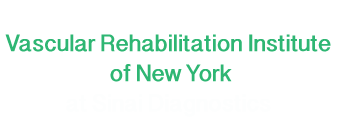Peripheral Arterial Disease (PAD)
Sinai Diagnostics offers – new and traditional ways to treat Peripheral Arterial Disease.
Avoiding any surgeries and using long-term treatments.
Just one outpatient procedure alone will restore your circulation and allow you to be free from any symptoms again.
Common symptoms for Peripheral Arterial Disease
Common Visible Symptoms
- Heavy and Tired Legs
- Painful walking
- Inflammation
- Cramps
Underlying Symptoms
- Poor Circulation
- Blocked Arteries
Frequently Asked Questions
What causes Peripheral Arterial Disease?
Arteries are the blood vessels that transport oxygen-rich blood and nutrients from the heart to the rest of the body. Arteries in the legs can become blocked when a sticky substance, called plaque, builds up inside the walls of the arteries. This causes them to narrow and become stiff, a process known as atherosclerosis. Atherosclerosis in the legs reduces blood flow, meaning that the leg does not receive a sufficient amount of oxygen. This condition is called PAD, or peripheral arterial disease.
What are the symptoms?
The most significant symptom of PAD is intermittent claudication (IC). IC is the earliest, most common symptom, and it causes pain in the legs and/or buttocks while walking. This pain goes away when the legs are at rest. If you have IC or PAD, you may feel some tightness, cramping, heaviness or weakness in the legs that accompanies minor physical activity. IC can be more noticeable when walking up a flight of stairs or climbing a hill.
As the disease develops, a person with PAD may begin to experience IC symptoms after walking shorter distances or smaller inclines. The progression of PAD can mean that pain, tingling and numbness in the legs persist even when at rest. Untreated PAD can be dangerous, as plaque blockages can continue to grow, leading to ulceration and gangrene and even putting the leg at risk for amputation.
What are the risk factors?
There are a number of risk factors that could lead to the development of PAD. Smoking can increase a person’s risk of developing the disease. If you have diabetes, high blood pressure or high cholesterol, you could also have an elevated risk of developing PAD.
How can it be treated?
There are several minimally invasive endovascular procedures that can be used to treat this disorder, providing pain relief and protecting the integrity of the legs. Some of these procedures include:
• Stent placement
• Atherectomy
• Angioplasty
• Endovenous ablation
• Thrombectomy and thrombolysis
